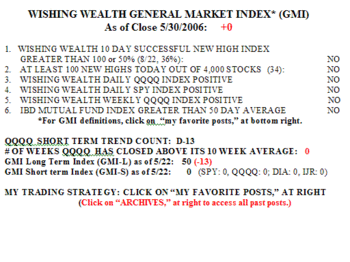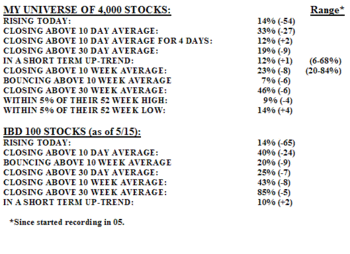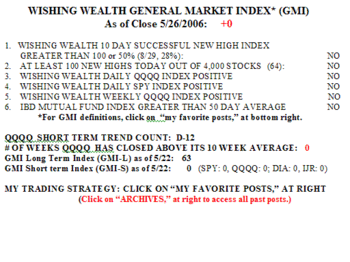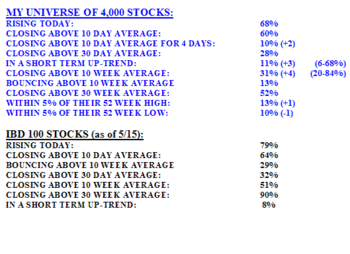The GMI remains at zero and there is no reason to change from a defensive posture. 78% of the Nasdaq 100 stocks advanced on Wednesday, along with 84% of the S&P 500 stocks and 90% of the Dow 30 stocks. There were still more new lows than new highs (66/41) in my universe of 4,000 stocks. 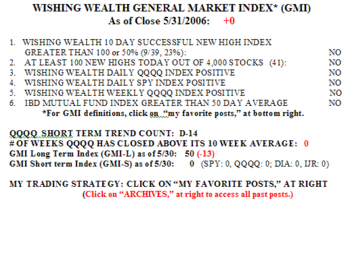 Wednesday was the fourteenth day (D-14) in the QQQQ short term down-trend.
Wednesday was the fourteenth day (D-14) in the QQQQ short term down-trend.
23% of the Nasdaq 100 stocks closed above their 30 day averages, up from a low of 11% on 5/23. 28% are now above their 10 week averages, up from a low of 21% on 5/23. 12% of the Nasdaq 100 stocks are in a short term up- trend, up from a low of 6% on 5/24. So, although the indicators remain very negative, they have moved up from their recent lows. 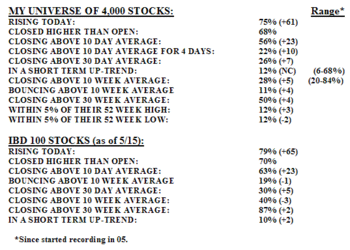
The IBD 100 growth stocks performed much like my universe of stocks. 75-79% of both groups of stocks advanced on Wednesday and 68-70% closed higher then their opening prices. However, only 26% of my universe of stocks closed above their 30 day averages, as did 30% of the IBD 100 stocks. Only 10-12% of both groups are in a short term up-trend. The longer term trends are still stronger for the IBD 100 growth stocks than for my general universe of stocks; many more IBD 100 stocks closed above their 10 and 30 week averages.
I remain mainly in cash and holding some puts. I like corrections, however, because it is easier to find the next set of leaders. The next leaders tend to be among the first to hit new highs. Today, there were 41 new highs. Among them were three stocks that had triple digit earnings gains in the most recent quarter: GLBL, IFO and WHQ. These stocks may be worth watching when the market turns……………..
Please send your comments to: silentknight@wishingwealthblog.com.
